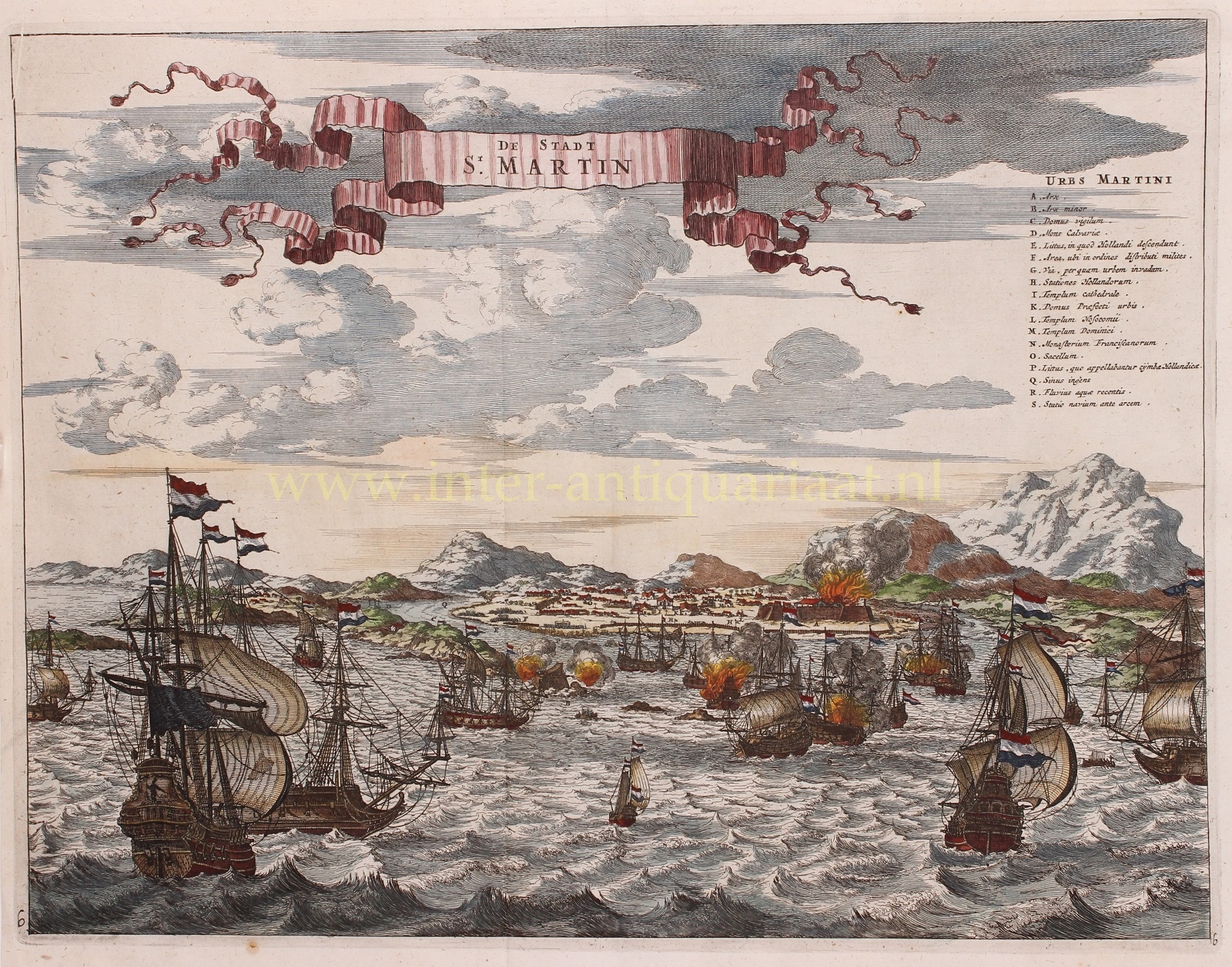ATTACK ON SAINT MARTIN, 1648
“De Stadt St. Martin”, copper engraving from “De Nieuwe en Onbekende Weereld: of beschryving van America en ‘t Zuid-Land” [The new and unknown world: or description of America and the South Land] by Arnoldus Montanus, published in Amsterdam by Jacob van Meurs in 1671. Coloured by a later hand. Size: 36 x 27,5 cm.
The view depicts a well-fortified town and a thriving port on the island of St. Martin. Like most other Caribbean islands, Saint Martin was first inhabited by a succession of native Indian groups, before European exploration began in the 15th century. Christopher Columbus was the first European to set eyes on St. Martin during his second voyage in 1493. Naming the island after the feast day of St. Martin, Columbus claimed St. Martin for Spain, but never established a settlement there.
Initially, Spain took little interest in the new territory, leaving the island to be occupied by the Dutch who used it as an outpost between their colonies in Brazil and New Amsterdam.
It was only when the Spanish realized that the Dutch West India Company was successfully extracting salt from the island that they reclaimed it and expelled the Dutch. During the seventeenth century, Dutch (and French) troops made several attempts to reclaim Sint Maarten. Finally with success in success in 1648:
“In the year of sixteen hundred and forty-eight, the Spaniards gave everything. Upon which Michel Adriaanszoon de Ruiter set sail from Sint Eustatius and took St. Martin in the name of the Dutch Republic.” According to Arnoldus Montanus (p. 186), of which this engraving testifies.
Price: Euro 675,-


